
Peru is a beautiful destination with a rich culture and history. But is Peru safe for tourists? Absolutely! Although Peru is still a developing country, it has made great strides in tourist infrastructure and is just as safe as many other popular tourist destinations. Below we have outlined all the information about safety in Peru that travelers need to take into consideration before their vacation. Following a few general guidelines will make your trip not only safe but also unforgettable!
For safety information regarding Covid-19, please review our updated post about coronavirus in Peru.
Like many other destinations, petty crime is the most common form of crime in Peru. Pickpockets may wander through crowded areas. Muggers may also cause a distraction in order to more easily steal someone’s belongings. In rare instances, someone may commit armed robbery with a knife or gun.
However, in the more touristy areas of Peru, theft is no more rampant than in other popular travel destinations. When traveling somewhere new, whether it’s Peru or a more developed country, it is always important to be aware of your surroundings. Keep valuables out of sight either in a hidden belt or in a completely closed purse or backpack while walking around. Also avoid isolated areas, especially at night.
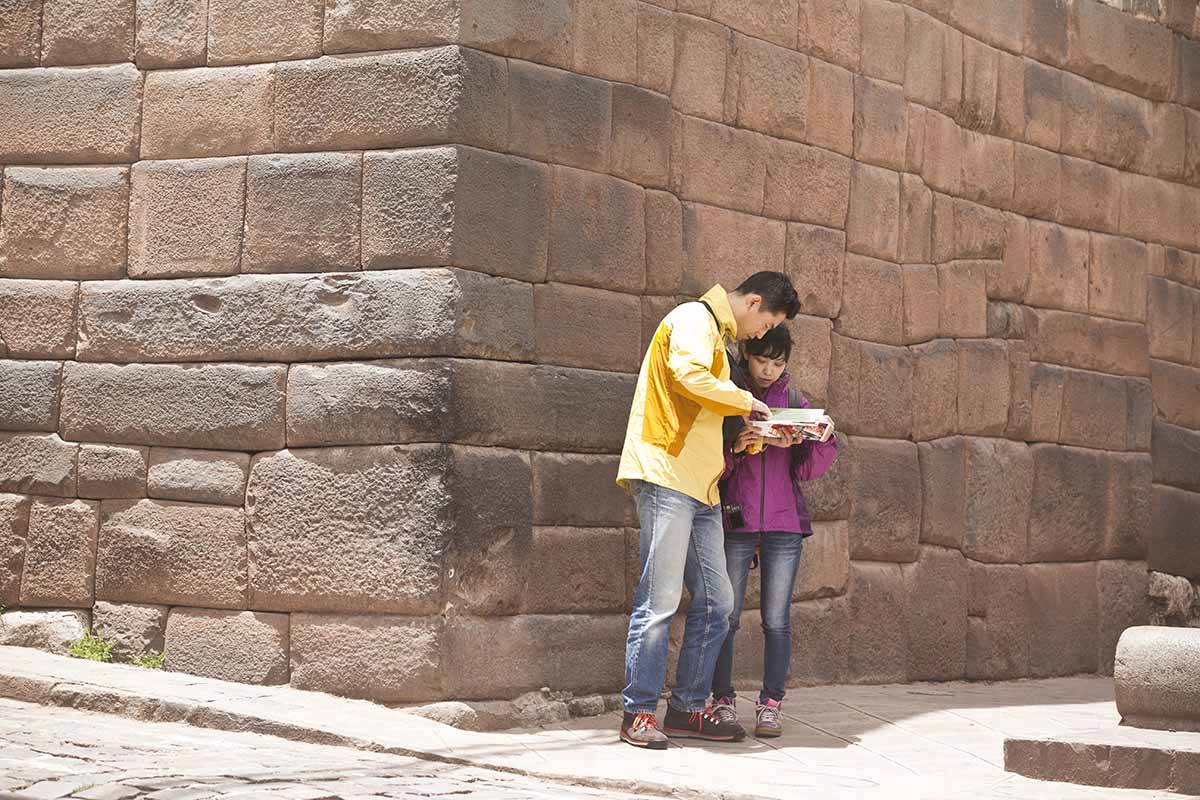
Always be sure to walk in well-lit, populated streets. Check a map if necessary to keep you on the right path! Photo by Ana Castañeda.
A common problem that travelers face is counterfeit currency. Normally, counterfeiters focus on large bills, such as 100 and 200 soles notes. However, it is possible to stumble upon fake coins as well. It can be tricky to spot fake currency, especially when it’s foreign. Before you go, be sure read our blog on learning how to spot fake Peruvian currency. It is highly recommended to break large bills at trustworthy establishments such as grocery stores or banks in order to avoid counterfeit money.
Although uncommon, tourists can fall victim to credit card fraud in Peru. Untrustworthy establishments can make a copy of someone’s credit card, or devices can be placed in ATMs to copy card information. In order to avoid this, make sure that cashiers keep your card in sight and use ATMs that are located inside banks or supermarkets with security guards. It’s common practice in Peru as well for waiters or staff to bring you the POS when you decide to pay for meals at restaurants or cafes.
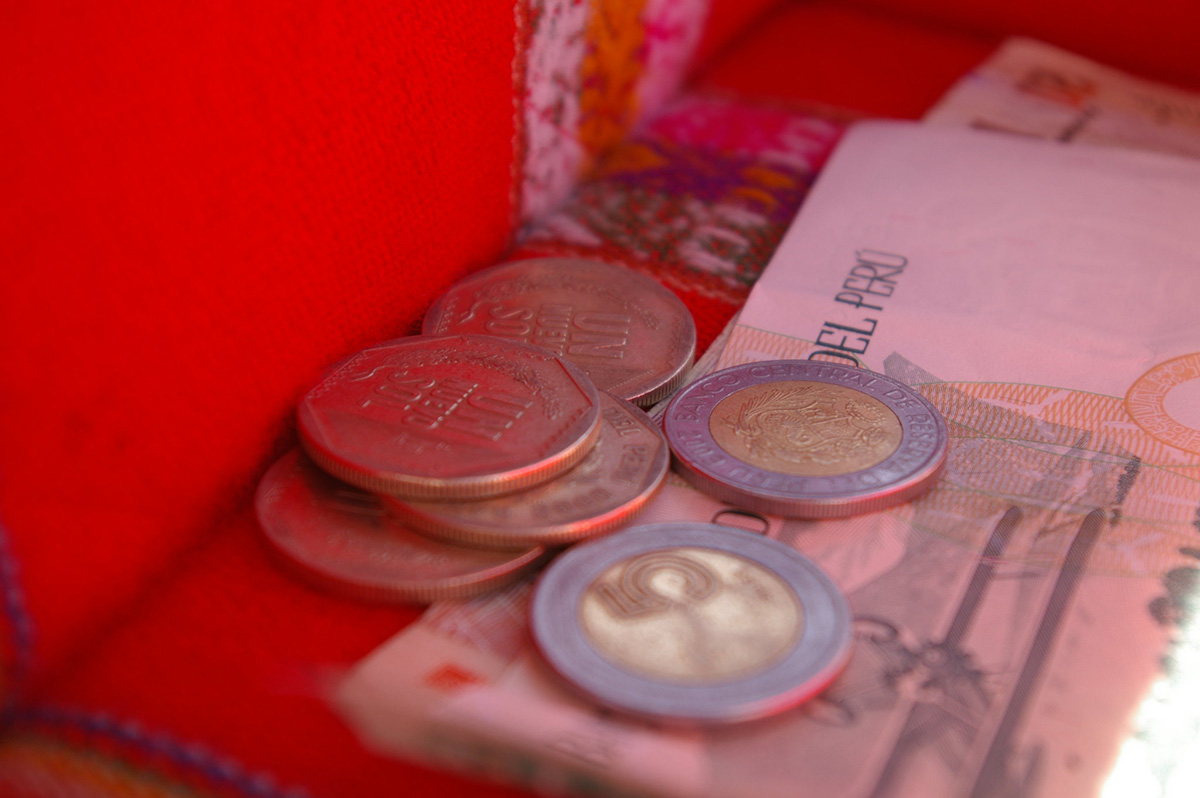
Although it’s more common to receive counterfeit bills, you should take a quick look at your coins, too. Image: by Amelia Wells, used under CC BY 2.0 / Compressed from original.
On the whole, Peru is a calm and peaceful country. However, protests occur from time to time. These are most common in the capital city of Lima and in Cusco.
Protests in Lima mostly center around national politics, and these demonstrations are often peaceful. It’s common to see police officers with police shields lining the Plaza de Armas outside the Presidential Palace during any sort of event in the area, big or small. Their presence shouldn’t be cause for alarm when touring the historic center.
Cusco and Machu Picchu are other common regions for protests. These tend to correspond with new regulations that have economic consequences for workers. Since Cusco is a major hub for tourism in Peru, these demonstrations will often take place during the high tourist season (May-September). This allows the most economic impact for their cause.
Protests in Cusco usually involve blocking roads and train tracks. In some instances, protesters may throw rocks and light tires on fire. Although this is not done with the intention to harm tourists, travelers should always avoid protests. A helpful tip is to set a Google alert for Peruvian current events to stay up to date before your trip.
During the 1980s and 1990s, Peru suffered from violent internal conflict. This conflict pitted the Peruvian government against the Maoist guerilla militia Sendero Luminoso (Shining Path) and the Túpac Amaru Revolutionary Movement. The majority of the fighting took place in the most rural regions of Peru. Even still, the violence from both sides took its toll on thousands of civilians.
The government under President Alberto Fujimori defeated both guerrilla groups in the 1990s. Today, small factions of the Shining Path terrorist group exist in the most remote parts of the country. Even so, tourist destinations are completely free of these fighters.
There are only two areas that tourists shouldn’t visit. Luckily, these areas are far away from the most popular places to visit in Peru. One is the VRAEM, located in the rural mountains between Ayacucho and Cusco. Here, Shining Path members are still active, as well as illicit coca traders. (Coca can only be grown legally if destined for local and traditional use, such as for chewing and making tea).
The second area that tourists should avoid is the deep Peruvian Amazon. This is especially true for the Colombian border. This is due, for the most part, to illegal drug and mining operations. In any case, there are no tourist sites in the VRAEM or Amazonian borders.
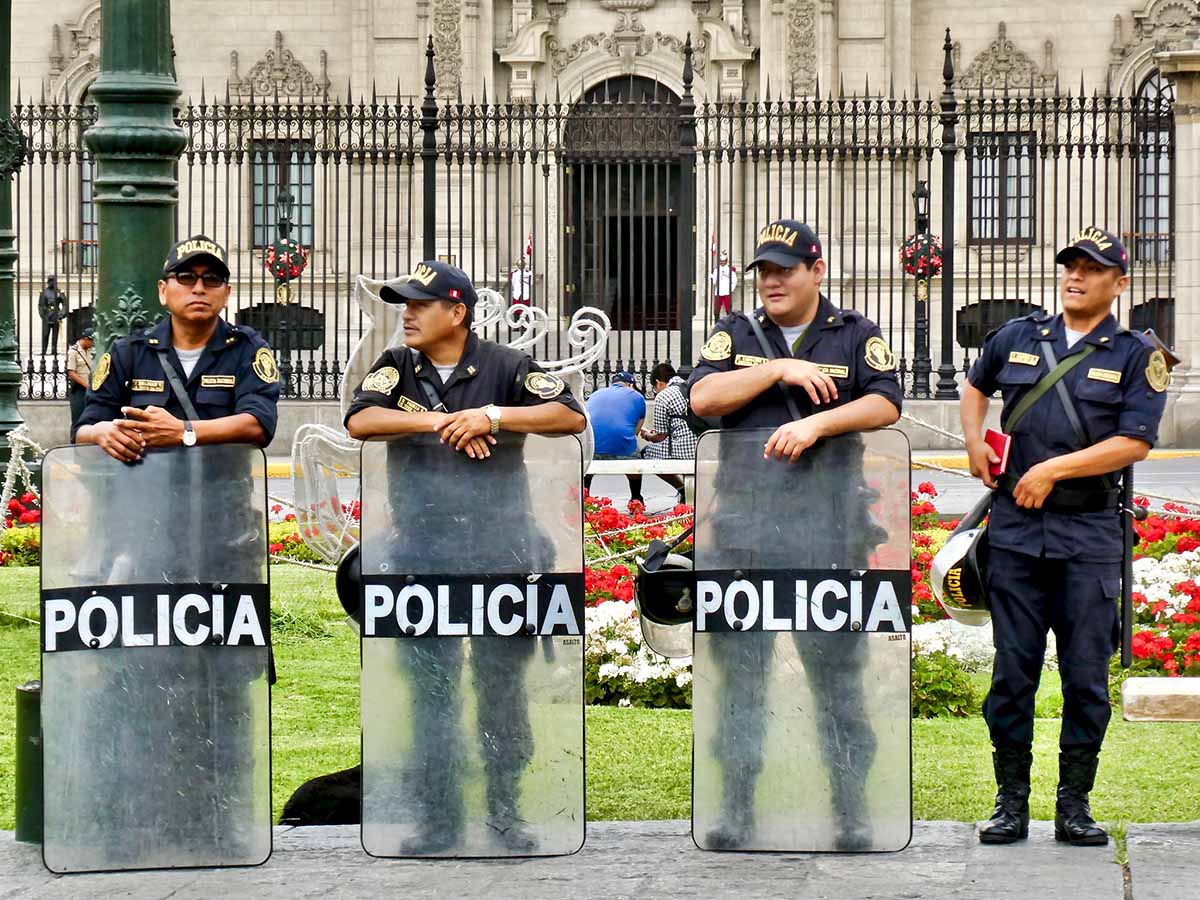
It’s a common sight to see police officers standing in front of the Presidential Palace in Lima’s historic center. Image by F Delventhal, used under CC BY 2.0 / Compressed from original.
It’s common to see police officers with police shields lining the Plaza de Armas outside the Presidential Palace during any sort of event in the area, big or small. Their presence shouldn’t be cause for alarm when touring the historic center.
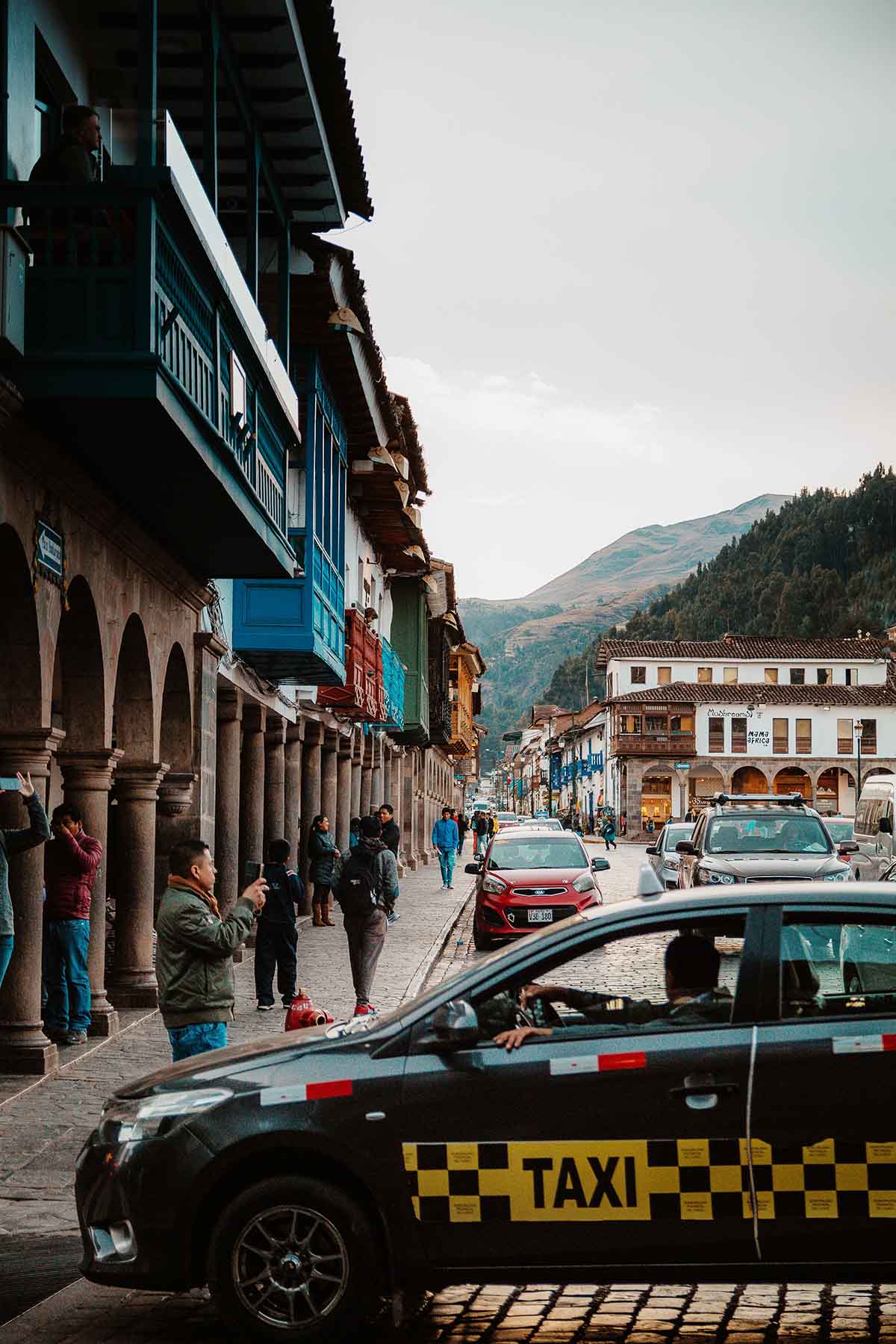
Always use a reputable taxi company when traveling in Peru. Your hotel can call one for you if you need! Image by Adrian Dascal on Unsplash.
The best way to get around in Peru, outside of guided tours, is by taxi. It is recommended that you call a vetted taxi company or have your hotel call one for you. Airports also have official taxi companies inside the building that have fixed rates around the city. In Lima, it is also possible to call a taxi with a number of taxi apps, including Uber, Taxi Beat, and Cabify.
When hailing a taxi on the street, you risk getting an unreliable driver, unreliable vehicle, or both. It is quite common for street taxis to be missing seatbelts and to be in generally poor conditions. Plus, taxis in Peru do not use meters and the fare must be negotiated before getting in. If you’re unsure of distances or what rates to expect, the driver has the advantage of overcharging.
Public transportation can be very complicated for foreigners, especially those with limited Spanish. You won’t find any route maps and timetables to tell you how to get to your destination. Instead, you would need to rely on asking locals and bus drivers.
This makes using public transportation as a tourist risky. Unless you have a good level of Spanish, as well as a good sense of direction, there’s a high chance that you’ll end up in an unfamiliar and potentially unsafe part of town. This is also true for colectivos, large public vans, that have routes between rural towns and villages. A misunderstanding on a colectivo could mean ending up in a place where they don’t speak Spanish at all, only Quechua.
If you decide to rent a car in Peru, be extra vigilant when getting behind the wheel. Driving conditions, in general, are poorer in Peru than in developed countries. Roads may be poorly maintained or unpaved, especially in rural areas. Also, mountain roads are notorious for being narrow, winding, and having steep drop-offs. It is not recommended to drive on these roads at night.
Other advice when it comes to getting around is to pay attention to traffic when out in the city. This is true whether you are driving or walking. If driving, be respectful of traffic flow whether or not those around you are following the rules of the road. Local drivers can be aggressive, so be sure to remain calm. If you decide to hoof it, always look both ways when crossing the street, even if you have a green pedestrian light.
Tourism is the third major industry in Peru. You will find a wide variety of local agencies from very posh services to basic ones. It is always recommended that you check the reputation of the tour agency you choose to go with. If not for safety—a Cusco City Tour is probably the safest tour out there—at least to make sure you’re getting your money’s worth.
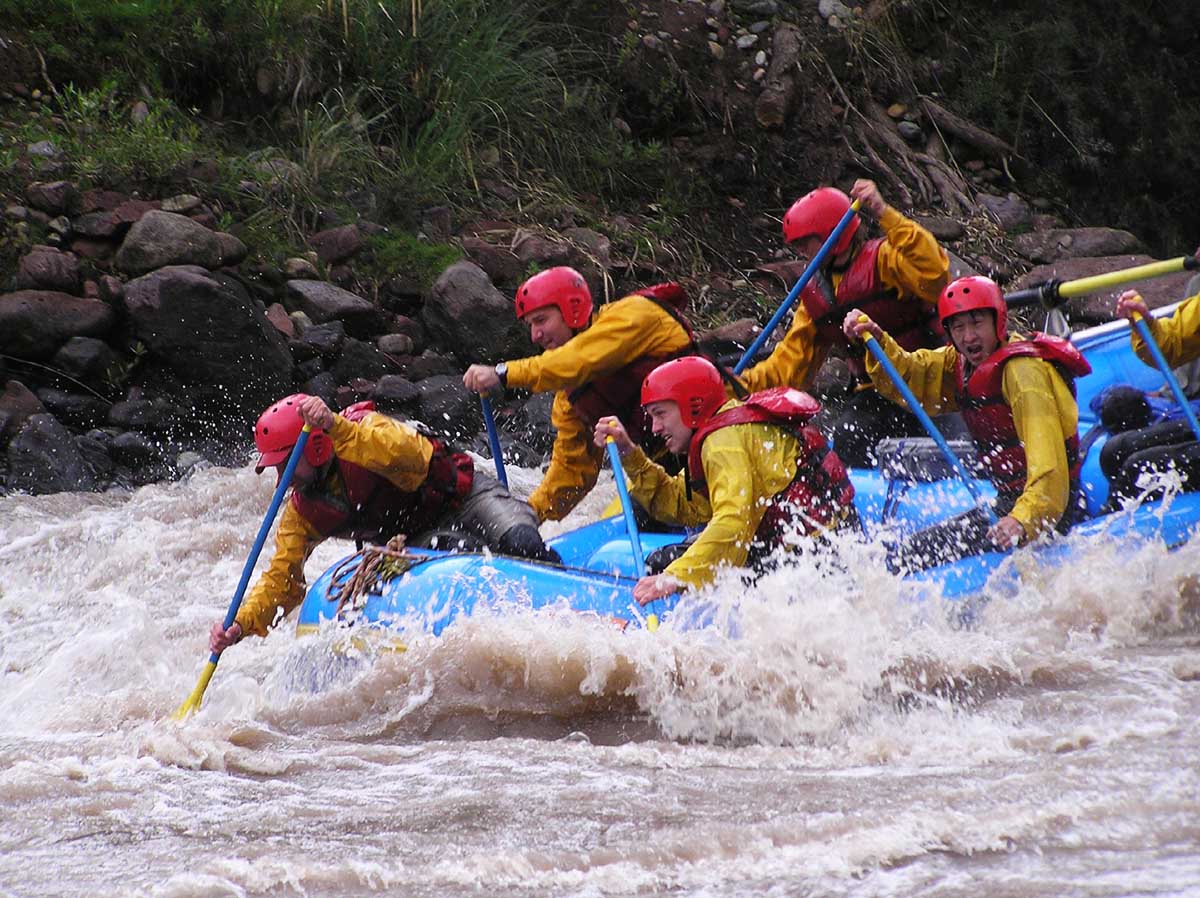
It may be a bit more expensive, but it’s well worth booking an adventure tour with a reputable provider in order to ensure your safety. Image: By Rupert Taylor-Price. Used under CC BY 2.0 / Compressed from original.
Checking that an agency is reputable is especially true for adventure tours. Adventure tours include everything from hiking to horseback riding, ATV tours, kayaking and zip lining. These activities require strict regulations to ensure the safety of tourists. Adventure tour guides should be specifically trained for the activity, as well as first aid. If special equipment is needed, like ATVs and kayaks, it should also be properly maintained.
Peru has come a long way in its regulation of tourism. However, regulations still aren’t uniformly enforced. Some adventure tour providers may be operating informally and thus not adhering to safety rules. Although not common, accidents can occur during adventure tours with informal providers with disastrous outcomes.
Machu Picchu Tours:
While some may come to Peru looking for adventure, others may seek out a more spiritual experience. Peru has a long history of spiritual connections to the Pachamama, or Mother Earth, from Incan civilization to remote Amazon tribes.
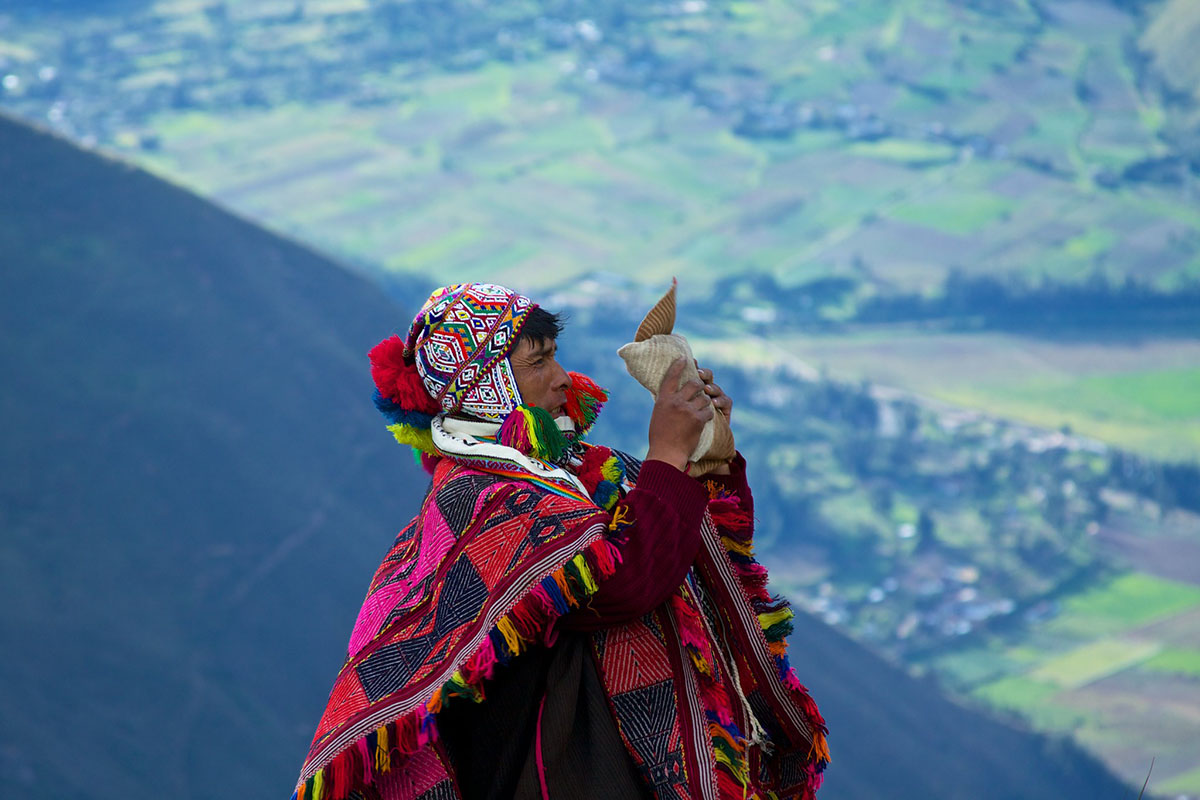
Having a local shaman help you connect to the Pachamama can be a very rewarding experience. Image: By McKay Savage. Used under CC BY 2.0 / Compressed from original.
A popular spiritual experience that travelers seek in Peru is the ayahuasca ceremony. Ayahuasca is a vine native to the Amazon jungle that has hallucinogenic properties. For generations, Amazonian shamans have used the vine to connect with the spirits of the natural world. However, reaching the level of a shaman takes years of practice. Although ayahuasca ceremonies can still be an eye-opening experience for beginners, for others it can lead to health concerns. Although vomiting and physical discomfort are common during the ceremony, some can experience worse effects, such as paranoic episodes.
Since you will be in an altered state of mind, it’s extremely important that you are in a safe environment. Untrustworthy providers could put your life at risk if you need medical attention during your ceremony. Moreover, fake spiritual guides can take advantage of participants when they are in a vulnerable state. For these reasons, Peru For Less chooses not to provide any services related to Ayahuasca. If you decide to include a ceremony during you trip to Peru, it will have to be planned yourself.
Peru is truly an incredible destination to travel to. The country itself is filled with culture, delicious food, and beautiful scenery. Just like any trip, it is essential to be well prepared for anything that can happen. In order to make your experience in Peru more seamless, organizing your trip through a reputable travel agency can make your trip safer and more enjoyable. Here at Peru for less, our team is well prepared to solve any issue that may arise with our 24/7 emergency contact phone number that will be able to give you immediate assistance. Feel free to contact one of our Travel Advisors about more information by filling out our Traveler Form.
Peru’s geography is diverse and breathtakingly beautiful. But certain areas are prone to varying degrees of inclement weather and natural disasters.
Overall, Peru is prone to different types of natural disasters. The most common natural disaster that occurs would be earthquakes since Peru lies in an active earthquake zone. There are frequent small earthquakes near the coastal region of Peru and also in the Andean mountain range. If you begin to feel an earthquake while indoors, whether in Peru or anywhere else, be sure to stay away from windows and cover your head by going under any solid furniture such as a strong table. If you are outside, try to get to an open area as quickly as possible and away from tall buildings, trees, or landlines.
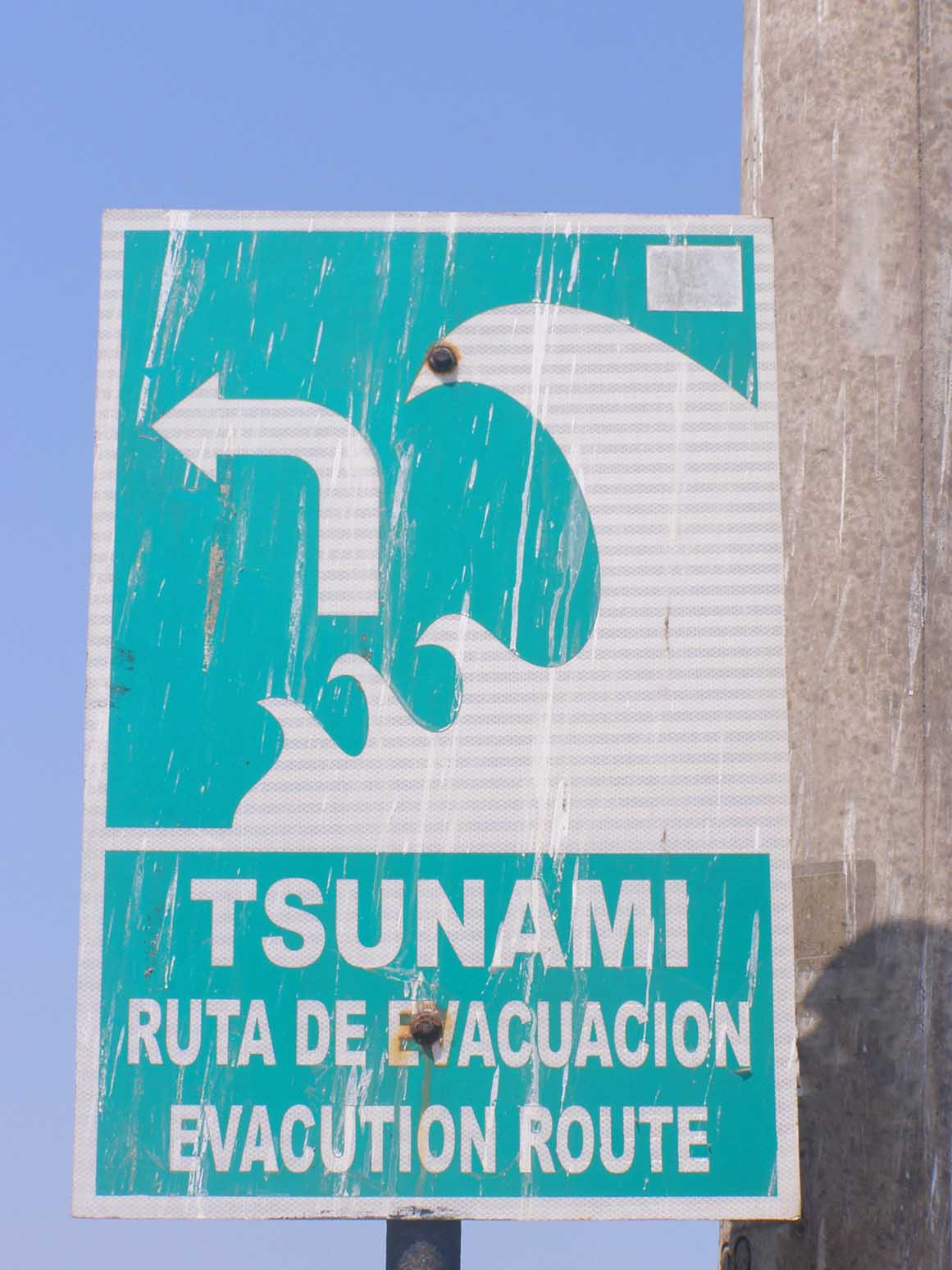
Lima is well marked with tsunami evacuation routes from Lima’s beaches and meeting points in case of an earthquake. Image: By KaMpErƎ & Le-tticia. Used under CC BY 2.0 / Compressed from original.
The Peruvian rainy season runs from November to April. During this time, the Andes mountain range and Amazon jungle experience heavy rainfall. It is possible that floods and landslides can occur affecting the roads and railways in the Cusco area as well as walkways in the Amazon Jungle. Be cautious when traveling in these areas during the rainy season and be sure to check with your Travel Advisor about the weather conditions before beginning your journey.
Peru is located in the “Ring of Fire,” and is home to over 30 volcanoes with a little less than half being classified as extinct. Many of these volcanoes, active or extinct, lie in the Andean mountain range of Southern Peru. The most visited destinations with volcanoes nearby are Arequipa and Colca Canyon. The city of Arequipa is surrounded by three volcanoes, with the snow-capped El Misti being the most famous of the three. While these volcanoes are absolutely stunning, it is important to pay attention to all volcanic eruption warnings such as frequent earthquakes in the area. If a volcano were to erupt during your trip, it is important to avoid breathing in the volcanic ash which you can do by staying indoors with all doors and windows shut.
Yes. Traveling to Peru alone is perfectly safe. Just take the same precautions you would while traveling anywhere else in the world. Pay attention to your surroundings, stick to well-lit and frequented areas, and keep valuables securely stowed.
Yes, it is safe to visit Peru as a solo female traveler. We even have a guide dedicated to women traveling solo.
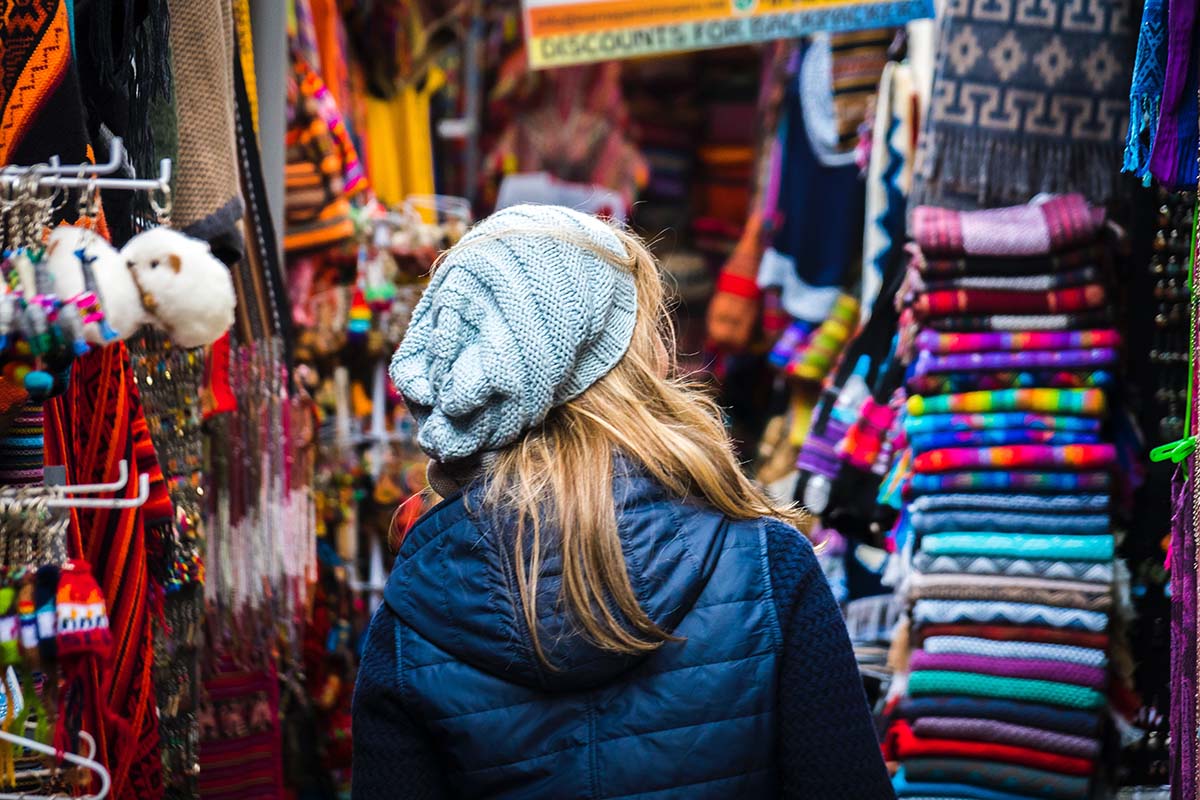
Peru is a great destination for solo women travelers. Just take the same precautions you would at any other popular tourist destination. Image: By Willian Justen de Vasconcellos on Unsplash.
Peru is a safe and great place to travel with kids of all ages. Many kids find Machu Picchu’s history fascinating. There are also tons of kid-friendly activities to do, such as hiking with llamas and chocolate making workshops.
Short answer: yes. Visiting Lima is just like visiting any other metropolitan area. There is, of course, a risk of petty-crime. But Lima is largely safe if you stick to the main touristic areas, such as Miraflores and Barranco. Take the same safety precautions you would when visiting any other city. Pay attention to your surroundings, keep valuables safe, and stick to well-lit and populated areas at night.
Note that for the historic center, since it is close to insecure areas, it is recommended to only visit during the day.
Yes. Cusco is a safe place for tourists to visit. It’s a small city with most of its tourist sites concentrated in the historic center and the adjoining hillside. Petty theft and pickpocketing can occur in Cusco, so pay attention to your surroundings and belongings.
Yes. Machu Picchu is very safe for tourists. The archeological site itself has many security guards and tour guides keeping an eye on things. Aguas Calientes, the town at the bottom of the mountain, is small and very calm.
Keep valuables like smartphones and wallets out of sight and secured inside a money belt, purse, or backpack. Leave any expensive or flashy jewelry in your hotel safe or back at home.
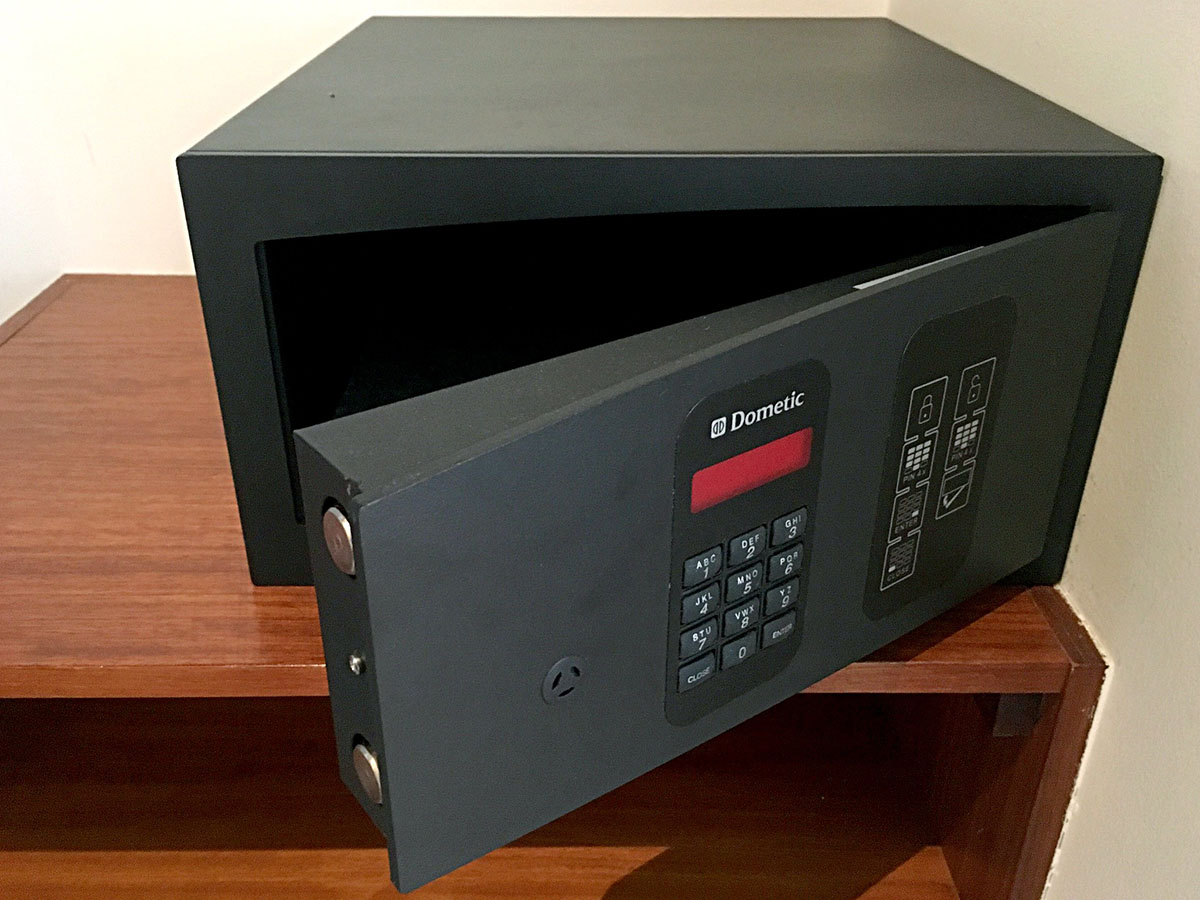
Keep your valuables locked up in your hotel safe when you’re out exploring. Image: By Marco Verch. Used under CC BY 2.0 / Compressed from original.
During your visit to Peru you will likely see a number of “Tourist Police.” Peru’s tourist police specialize in the safety, protection, and orientation of tourists during their visit. They patrol commercial areas, hotels, archaeological sites, and museums. They also speak English fluently. If you find youself in need of any assistance feel free to ask them for help.
The tourist police’s phone number is 0800-22221.
Altitude sickness affects most people at and above 8,000 feet (2,438 meters) above sea level. There are a few ways to combat altitude sickness:
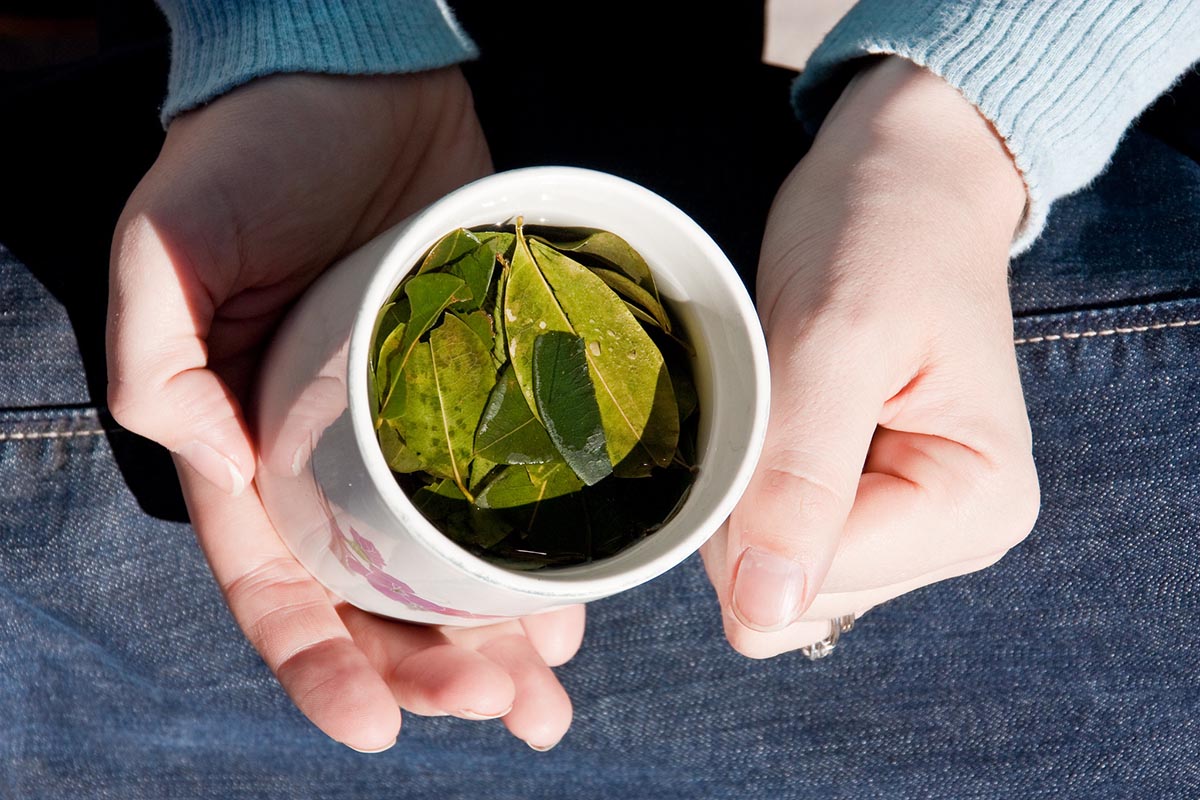
Coca tea is the local remedy for soroche, or altitude sickness. Image: By Nick Jewell. Used under CC BY 2.0 / Compressed from original.
No. It is not safe to drink the tap water. While traveling in Peru, always drink filtered or bottled water.
Peru does not require any special vaccinations in order to enter the country. All travelers should, however, be up-to-date on their routine vaccinations. For special vaccine considerations, you can visit the CDC’s website or speak with a specialized travel doctor.
Malaria does exist in the Amazon region of Peru. However, tourists visiting the Amazon for a relatively short time (a few days to a week) rarely catch the disease, especially if they are adequately protecting themselves from mosquitos. If you are planning to stay in the Amazon for a longer period of time or to visit more remote jungle locations, check with your doctor or a specialized travel doctor if you should bring malaria medication.
It is a bit risky to hail a taxi off the street in Peru. Street taxis are sometimes poorly maintained, lack rear-seat seatbelts, or are unlicensed. It is more advisable to call a reputable taxi service (or use a taxi app if in Lima).
Although not particularly dangerous, driving conditions in Peru are not on the same level as more developed countries. In poor urban areas and more rural ones, road conditions may be poorly maintained. Some areas only have dirt roads and often are poorly marked. Highways through the mountains are notoriously narrow and winding. It is not recommended to drive on these roads at night.
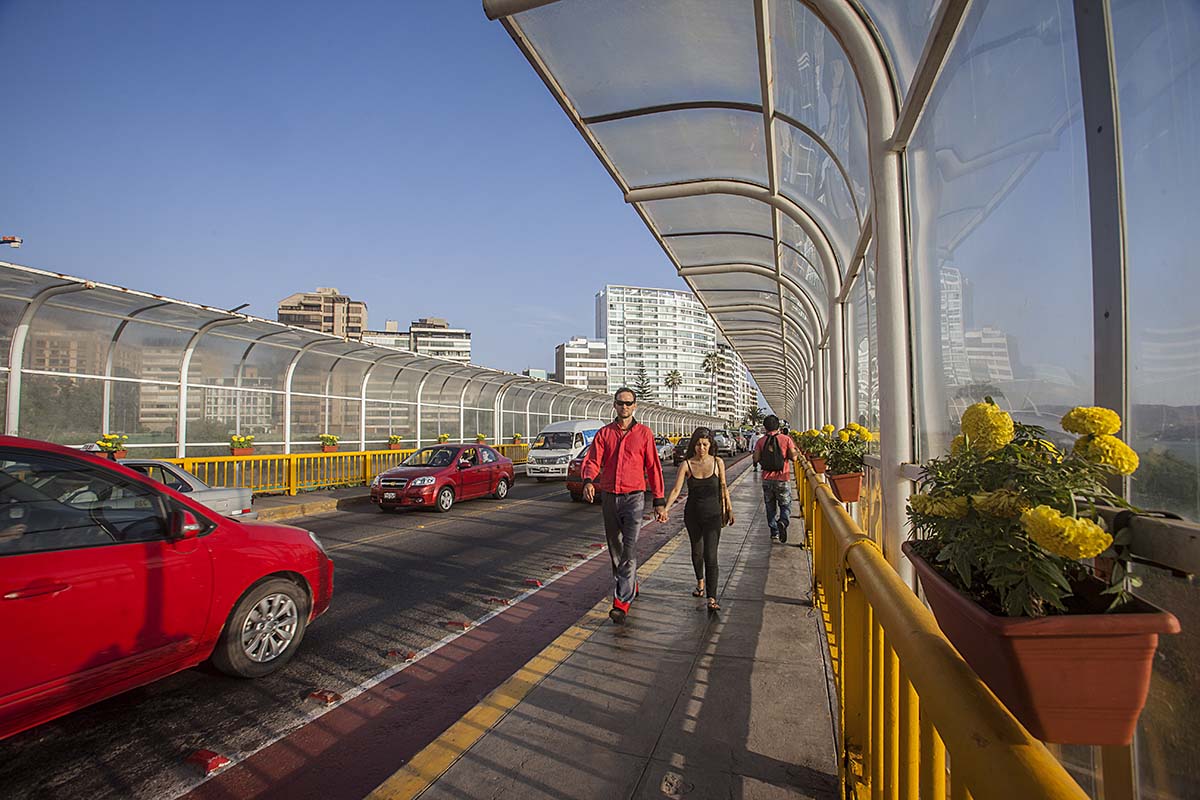
Stay safe when walking around the city by sticking to the sidewalk and watching for cars when you cross the road, even if you have the green light. Photo by Ana Castañeda for Peru For Less.
Reputable adventure tour providers who regularly maintain their equipment and have valid certifications offer perfectly safe adventure tours. Do not reserve such a tour with a provider who is informally operating or doesn’t have proper certifications.
Ayahuasca ceremonies can be a safe and enlightening experience so long as they are performed with participants’ health and safety in mind. It is easy to take advantage of someone under the influence of this hallucinogenic substance. Do your research and only go with a trustworthy shaman.
Earthquakes are difficult to predict. Peru may have a few earthquakes one year and none the next. These range in magnitude from minor rumbles to intense quakes like the 2007 earthquake
Tsunamis in this region are most often the result of earthquakes. This means that predicting a tsunami is just as difficult as predicting an earthquake. However, the good news is that a severe earthquake is necessary to create a tsunami and such powerful quakes are few and far between.
It’s always a good idea to have travel insurance before any big international trip! Although Peru is a perfectly safe travel destination, things don’t always go according to plan. This could be because of inclement weather that cancels a flight or lost luggage from a connecting flight. Trip insurance ensures that your investment is protected.
To stay up to date on current events in Peru, including Peru travel warnings and health notices, you can check the following:
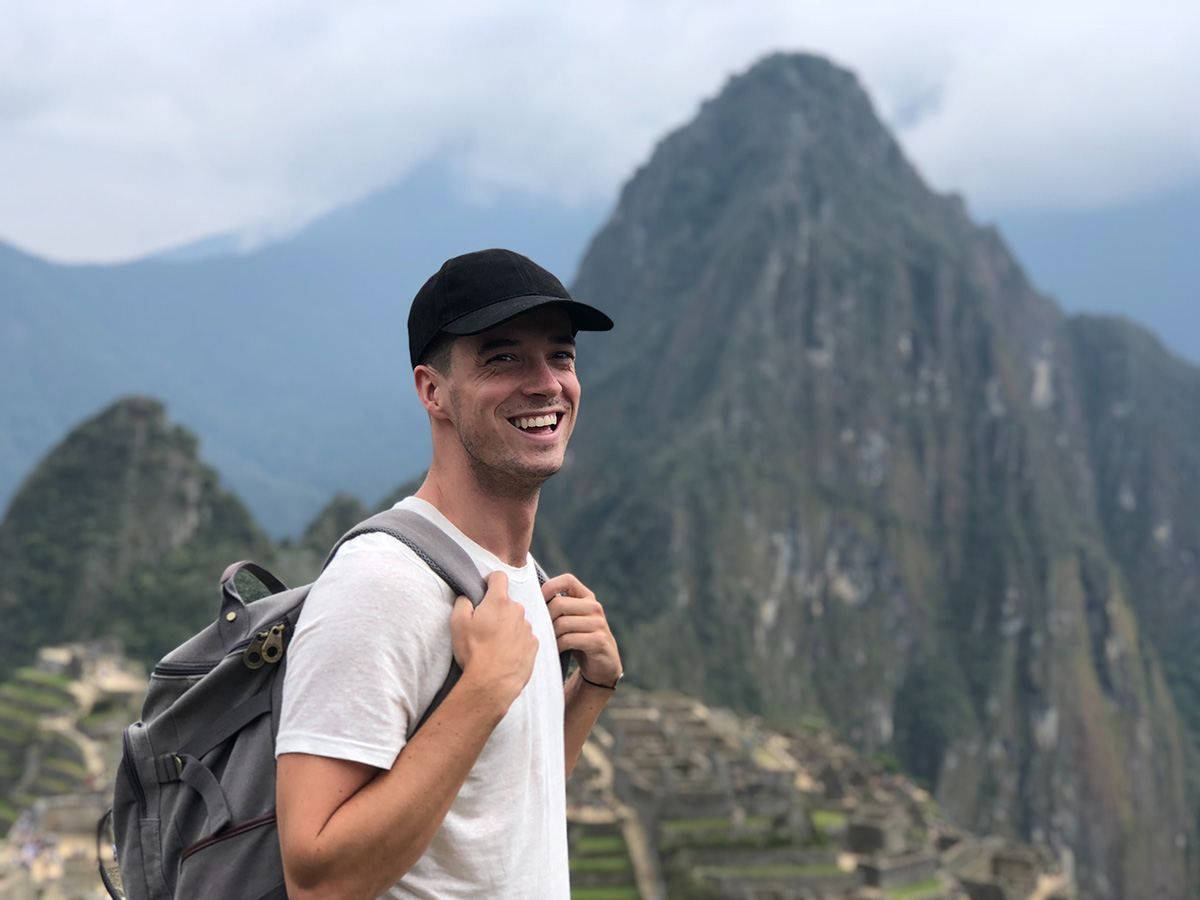
When you take basic safety precautions, you’re sure to have a fun and memorable trip! Image: By Ray Berry on Unsplash.
Although Peru is still developing, it has come a long way. Today traveling to Peru is just like visiting any other international destination. By taking a few safety precautions, you are sure to have an enjoyable trip that will go off without a hitch. Not only is Peru safe, but it’s also welcoming for all travelers! Peru For Less would also like to let you know that Travel Advisories and conflicts listed on the United States travel website are far removed from the safe tourist areas you’ll be visiting.
Rest assured that when you book through Peru for Less, your trip will go smoothly. Feel free to Contact our team to plan your dream Peru vacation from start to finish.


Email: [email protected]
Sign up to receive our newsletter for great articles, stunning photos, and special deals.